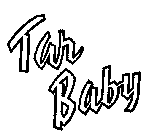Earlier today it was announced that the U.S. Patent and Trademark Office has canceled the trademarks belonging to the Washington Redskins. The decision was the result of a petition signed by five Native Americans who implored the U.S. Patent and Trademark Office to cancel the trademarks, citing a section of the Trademark Act which "prohibits registration of marks that may disparage persons or bring them into contempt or disrepute." Bob Raskopf, trademark attorney for the Washington Redskins, stated that he will appeal the ruling.
While Americans continue to debate whether or not the name of Washington's football team is offensive, the fact remains that the USPTO has issued numerous trademarks far more repugnant. Here are ten examples of trademarks which managed to fly under the USPTO radar:
1. TAR BABY
Although this trademark has long since expired, the Tar Baby label appeared on citrus fruits and fresh vegetables since the 1950s. Texas-based Vale Mayes & Co. applied for the trademark in May of 1954, and the USPTO registered the Tar Baby name and logo on October 11, 1955.
2. SAND MONKEY TIRES

|
| From the same company that brought you Camel Jockey underwear! |
In March of 2009, The Reinalt-Thomas Corporation, of Arizona, filed a service mark application for Sand Monkey Tires. Although it remains unclear whether or not Brian LaCorte- the patent attorney who filed the paperwork with the USPTO- knew that "sand monkey" is a racial slur for those of Middle Eastern descent, the paperwork classifies Sand Monkey as an entity focused on "advertising and promotion of motor sport races and events". The application was abandoned on October 22, 2010 (FYI: a trademark application is designated as abandoned when the applicant either goes out of business, forgets to complete the application process, dies, loses interest, or just plain runs of money and can't pay the legal fees).
3. RETARDIPEDIA

|
| Not to be confused with Webster's Unabridged Derrrp-tionary. |
Retardipedia.com is a humor website (we use that term loosely) built to resemble Wikipedia- right down to the logo. Copyright infringement aside, the Retardipedia homepage states: If you are looking for useful info on important topics composed by an array of experts go to to Wikipedia.org. If you are looking for useless info on asinine topics composed by a litany of morons... welcome to Retardipedia.com.
Maybe the USPTO is insensitive to the mentally handicapped, or maybe they thought Retardipedia was a website devoted to helping those with mental retardation but, at any rate, the USPTO issued James A. Wright a trademark on February 16, 2010. James A. Wright also holds the "Celebretards", "Tardvard", and "Tardglish" trademarks.
4. ROUNDEYES

|
"Roundeyes" is a racial epithet used by Asians to describe, well, anyone who's not Asian. It is also the name of a company which specializes in (according to the USPTO): automotive lighting components, namely- replacement headlamps, LED interior and under vehicle lighting, tail lamps, and vehicle side lights namely marker lights. Bruce Wade, of California, filed for a trademark on April 27, 2006 and the USPTO registered his trademark in October of 2007.
5. DOTHEADS

|
| You gotta admit, it IS kinda cute... |
In 2013, Dotheads Inc. of Houston, Texas, applied for a trademark. Dotheads (a derogatory term for women from India) is the name of a company which makes athletic apparel and clothing for dancers. The trademark process was abandoned on March 7, 2014.
6. HEBE
Hebe is a racial slur for Jewish people, and it is also a China-based company which manufactures electronic cigarettes. The USPTO issued a trademark for Hebe on May 18, 2014.
7. FAG BAG

|
| They obviously spent a fortune on a graphic artist. |
In 1979, the USPTO issued a trademark to the Linderman brothers of Broderick, California for "Fag Bag", a line of handbags and purses. The logo features a lit cigarette (known as a "fag" in many parts of the English-speaking world), so it's likely that the Fag Bag wasn't intended to be offensive to the homosexual community.
8. FAGOUT!

|
| For those hard to get out Crisco stains. |
This company, which specializes in clothing and accessories, filed for a trademark from the USPTO in late 2013 (the application is still pending). To "fag out" means to chicken out or to change plans unexpectedly, as in: "Steve was going to ask Kate on a date, but he decided to fag out at the last minute."
9. GATOR BAIT

|
| Ah, the "removal of discolorations". I get it now. Clever! |
The USPTO issued a trademark to the Reno-based IGT Corporation in 2014 for Gator Bait, which appears to be some sort of gambling device or casino game. Unfortunately, the term "gator bait" is a popular Southern slur for young black children. According to Wikipedia:
Gator Bait. A black person, especially a black child. More commonly used in states where alligators are found, particularly Florida. First used in the early 20th century, although some hypothesize the term originated in the late 19th century.
In fact, the term "gator bait" is so common in certain parts of the South that it even appeared on turn-of-the-century postcards:

|
| This is just plain wrong. |
10. DAGO RED

|
| Far more intoxicating than gook sake or wetback cerveza. |
"Dago" is a racial slur for those of Italian descent, and "dago red" is a slang term for homemade wine. Dago Red is also a clothing brand owned by Frank J. Taylor of North Carolina. Even though "dago" is a word which many Italian-Americans find extremely offensive, the U.S. Patent and Trademark Office issued a trademark to Mr. Taylor on October 20, 2009.
There you have it, ten examples of trademarks which are every bit as offensive as the Washington Redskins. From dot heads to tar babies to sand monkeys to dagos, the USPTO appears to be an equal opportunity racial offender.


